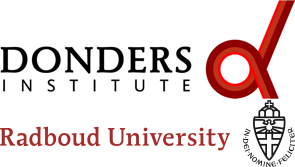Rodents use their whiskers (more than other sensory systems) to solve real-world problems like navigation, object localization and texture discrimination. Neurons in the barrel cortex (the part of the rodent brain that processes information from the whiskers), show strong threshold adaptation, that is influenced by neuromodulators such as dopamine. In our department, we have recently shown that both this adaptation and the effects of dopamine are very different between excitatory and inhibitory neurons[1]. The student will investigate the functional role of this threshold adaptation: how does it affect how precise and efficient sensory information can be represented in the activity of the neurons? And what is the effect of dopamine on this network processing? We will investigate this using different connectivity structures, using a biophysical model of barrel cortex recently developed by Fleur Zeldenrust et al. at the Department of Neurophysiology[2], and also using various theoretical networks such as balanced random networks. The conclusions will be validated against data from in vitro experiments. We will collaborate with Dr. Rena Bakhshi from NLeSC for model validation techniques.
[1] da Silva Lantyer et al (2018). GigaScience, 7(12), 1–9; Zeldenrust et al. (2018), Bernstein Conference 2018; Calcini et al. (2019) Cosyne Abstracts 2019.
[2] Manuscript is under review, but code is available online.
Expected Results:
- Mechanistically model various forms of threshold adaptation
- Understand the interplay between network connectivity and node non-linearity on network activity
- Understand the interplay between network connectivity and node non-linearity on network function (i.e. somatosensory perception)
Planned secondment(s):
- IMBB, FORTH, Panayiota Poirazi, M16-18: compare the effects on network computation of node-nonlinearities from dendrites with node-nonlinearities from threshold adaptation.
- MetaCell Ltd., Matteo Cantarelli, M31-33: visualize and analyze both the experimental and simulated data using the recently developed tools by MetaCell
- You will also be asked to play an active role in the organisation of the yearly events of the Nederlandse Hersenolympiade.
Enrolment in Doctoral degree(s): You will be enrolled in the Donders Graduate School, Radboud University.

